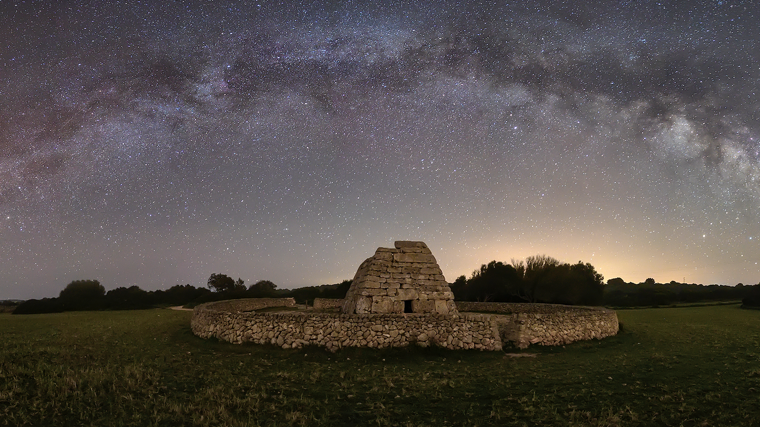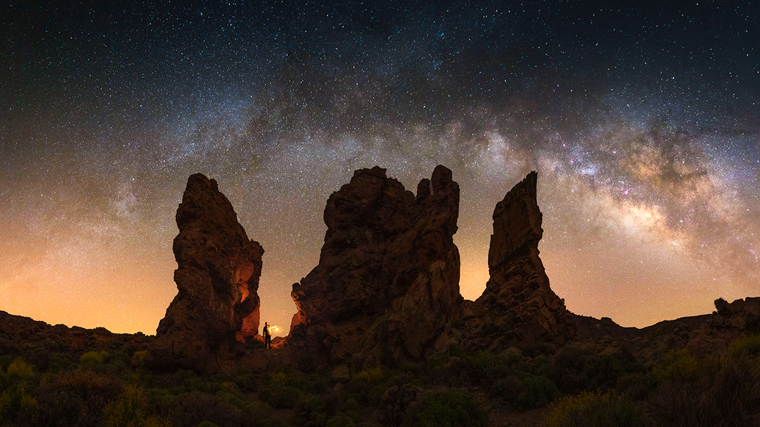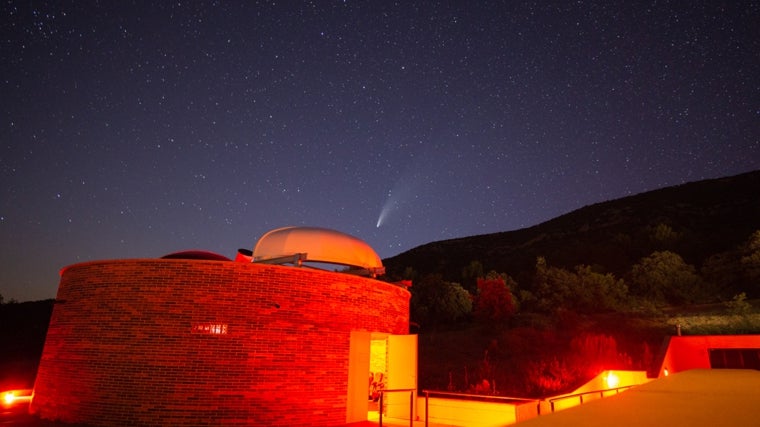Five of the best spots in Spain to see the Perseids

Every year, in mid-August, you can enjoy one of the most beautiful and eagerly awaited astronomical spectacles : the Perseids , a meteor shower that can reach 200 per hour and travel at over 50 km/h. While its peak activity occurs on the night of July 12-13, according to the National Geographic Institute, it actually begins around July 17 and ends around August 24.
To fully appreciate the so-called 'Tears of Saint Lawrence' – a name given to them due to the meteor shower's proximity to the martyr's feast day, which is celebrated on August 10 – a number of conditions must be met, so not just any location will do if you want a good panoramic view.
Escaping the light pollution of big cities is key, and this year, as the moon has just entered its full phase, brightening the sky even more, the best time to observe it is after sunset. For those looking for a quick getaway, here are five destinations, five of the best places in the country to experience a magical night.
Located 40 minutes from Vigo by boat, this small paradise in the lower Galician estuaries is the best place to unwind, relax, and stargaze. Its Rodas beach , considered one of the most beautiful in the world, is an ideal place to enjoy the Perseids. This protected natural environment has minimal light pollution and is a Starlight destination , guaranteeing a dream experience. It's important to note that to spend the night on the island, you must book a campsite. Alternatively, you can take a boat to the vicinity of the Cíes Islands, allowing you to admire the sky from the sea. This is a special service offered by Naviera Mar de Ons, for example.
The island of Menorca, declared a Starlight Reserve and Destination in 2019, has several spots to consider during these August nights. First, there's Cala Macarella , one of the most famous and beautiful on the island. Unspoiled, isolated—only accessible on foot or by boat—and surrounded by high cliffs covered in leafy pine forests, this sandy beach invites you to spread out your towel, lie back, and gaze at the sky with the sound of the sea in the background, a melody that invites you to completely relax. To see these 'shooting stars' reflected in the sea, visit the Cavalleria Lighthouse, a 19th-century construction that sits on reddish cliffs offering a clear horizon to the north, and the Pont d'en Gil , a natural arch sculpted by water and wind. Finally, there is the Naveta de Tudons , a 3,000-year-old Talayotic monument where activities that combine archaeology and astronomy take place in a magical and unparalleled experience.
 Starry Night at the Naveta de Tudons, Menorca
Antoni Cladera - Menorca tourism
Starry Night at the Naveta de Tudons, Menorca
Antoni Cladera - Menorca tourism
In the imaginary triangle formed by the cities of Plasencia, Trujillo and Navalmoral de la Mata, with the Tagus River as its backbone, lies the Monfragüe National Park , a natural area that is part of a territory declared a Biosphere Reserve by UNESCO in 2003. This enclave, one of the natural wonders of Cáceres, covers an area of almost 18,400 hectares, is home to more than 208 species of vertebrates and has the best-preserved and largest area of Mediterranean forest in the world. Of the different viewpoints spread throughout the territory , the Salto del Gitano, where the remains of Monfragüe Castle are also located, is the best for observing the sky and obtaining the best panoramic views of this nocturnal spectacle, in which you will probably join the occasional bird.
Thanks to its clear skies, high altitude, and unique conditions, Tenerife has been certified as a Starlight Reserve and Tourist Destination since 2013. To enjoy the tears of San Lorenzo, there are numerous viewpoints located in easily accessible areas with no visiting hours. Guajara Mountain , the third highest peak in the park, which can be reached by a route that starts from the Parador de Las Cañadas along a marked trail, is one option, but not the only one. The Erjos viewpoint , located between mountains covered in laurel forest, the Chivisaya viewpoint , which offers a wide view of the Güímar Valley with its cultivated areas and greenhouses, and the Izaña area , an elevated area between the Teide Observatory and the TF-24 highway that has become a classic among astronomers, complete the list.
 Starry night in Tenerife
Tenerife tourism
Starry night in Tenerife
Tenerife tourism
The best skies in Catalonia, cloudless nights, little rain, low light pollution... these are some of the characteristics of the Montsec Astronomical Park that have earned it the Starlight Tourist Destination certification. This complex, located in Àger (Lleida), is dedicated to research, training, and dissemination of astronomy, and its Center for the Observation of the Universe is a benchmark in teaching and disseminating this discipline. In addition, nighttime visits guided by an astronomer to the planetarium, permanent exhibition, and telescope park are offered, lasting two hours and costing from €17.50. They also offer tailored sessions for groups to learn and enjoy astronomy, and special sessions such as these Perseid Nights (please inquire).
 Night view from the Montsec Astronomical Park
Montsec astronomical park
Night view from the Montsec Astronomical Park
Montsec astronomical park
ABC.es





